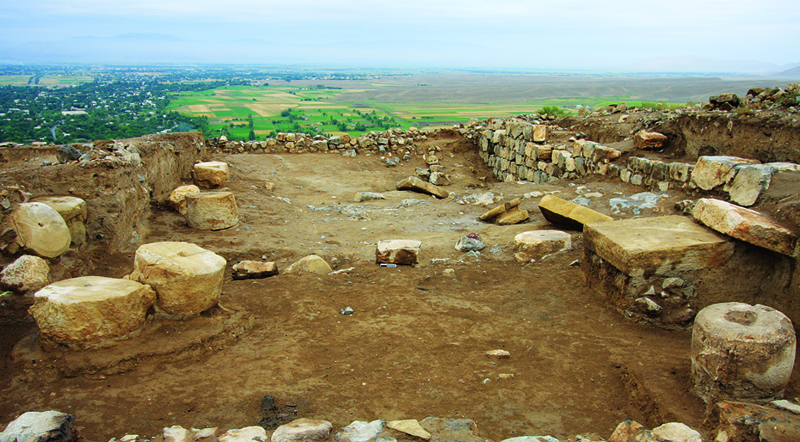April 2012 (116.2)
Field Report
On the Edge of Empire: 2008 and 2009 Excavations at Oğlanqala, Azerbaijan
By Lauren Ristvet, Hilary Gopnik, Veli Bakhshaliyev, Hannah Lau, Safar Ashurov, and Robert Bryant
The nature of political complexity in the Caucasus has emerged as a significant research question in Near Eastern archaeology. Until recently, archaeological developments in Azerbaijan have been left out of this discussion. Two seasons of survey and excavation undertaken by the Azerbaijan National Academy of Sciences and the University of Pennsylvania at the Iron Age site of Oğlanqala in the Naxçıvan Autonomous Republic of Azerbaijan have begun to clarify the local origins of an Iron Age polity and its relationship to major Near Eastern empires, including Urartu, Achaemenid Persia, and Parthia. Situated in the northern half of the fertile Şərur Plain, Oğlanqala was in a position to control a pass through the Dərələyəz Mountains as well as the agricultural land of the plain. Indeed, in the Iron Age, the Şərur Plain was a complex landscape dominated by Oğlanqala but including at least six other fortresses and many cemeteries. The 2008 survey revealed that Oğlanqala was founded in the Early Iron Age and has extensive Middle and Late Iron Age material. Excavations in 2008 and 2009 in the citadel and domestic buildings uncovered architectural and ceramic differences from contemporaneous Urartian, Achaemenid, and classical sites, while also revealing evidence for interaction among them.
